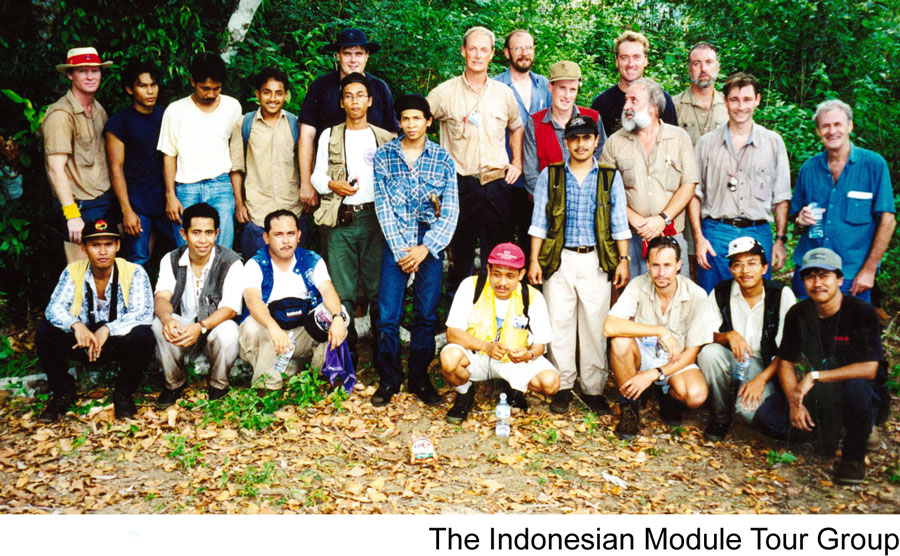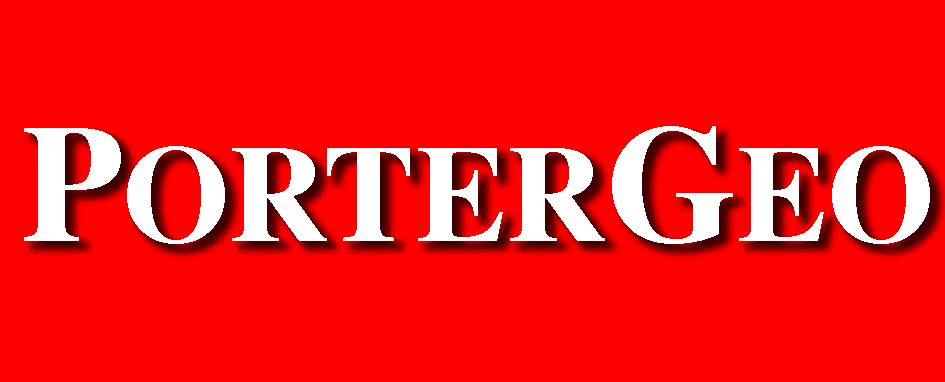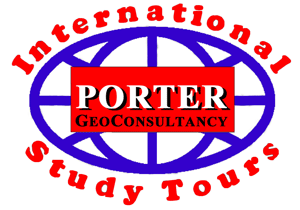| |||||||||||
| |||||||||||
| |||||||||||

By Mike Porter
Late in the afternoon of Tuesday May 6th, 1997, in the terminal at Denpasar international airport, Bali, nine senior geologists from as many companies said their farewells, exchanged business cards and shook hands. This was interspersed with reminiscences of aspects of the eleven great copper-gold deposits they had visited across the vast Southeast Asian Archipelago over the last three weeks. They also exchanged anecdotes about some of the other seventeen of their colleagues that had shared different modules of the tour with them. Finally they casually promised to keep in touch, and then wheeled their baggage trolleys off to take different flights to their home bases in various centres in Australia, the Southeast Asian mainland, the Archipelago nations, and as far afield as the Americas.
This break up brought to an end the first of the Australian Mineral Foundation's International Study Tours - Geology and Ore Deposits "The Copper and Gold Deposits of the South East Asian Archipelago". The tour had started 22 500 km of travel earlier at Port Moresby in Papua New Guinea on Sunday 13th April. The break up had actually started two hours before on Lombok when the party had totalled fifteen, the size of the group on each of the three modules of the tour, that covered PNG, the Philippines and Indonesia respectively. Twenty six participants had taken part in the tour overall, while nine took all three modules. During the 24 days on tour, eleven of the significant copper and/or gold deposits of the Southeast Asian Archipelago had been visited, including some of the worlds most fabulous and professionally interesting orebodies, in breath-taking, remote and exotic locations. These deposits were selected to provide a range of mineralisation styles in a variety of hosts and tectonic settings. Each visit entailed a briefing, followed by an underground, open pit and/or core inspection, and in most cases a traverse of the enclosing country rocks. Access to these deposits had included international jet travel, nearly 4000 km of charter flying, around 1000 km by car and bus over some rough, sometimes crowded, sometimes lonely and at times exciting and spectacular roads, sea voyages between islands and helicopter transfers. Accommodation had ranged from five star international hotels to jungle camps. At one extreme, older deposits in established areas were visited, where the ore and country rocks were well exposed, fracturing and sulphide developments were obvious, and the ore-wall rock relationships were revealed along with alteration and mineral zonation. At the other extreme, vast new deposits in virtually their virgin state were visited where the obvious "*#@! we could find one of those" features did not seem so clear after all, when concealed by agricultural terraces, soil, scree cover and jungle. Ore Deposits
The ore deposits visited principally represented porphyry copper-gold and epithermal gold styles. The porphyries included Ok Tedi in PNG, Grasberg and Batu Hijau in Indonesia, and Santo Tomas II, Dizon, the Guinaoang Project and Lepanto/Far Southeast in the Philippines.
Gold only orebodies were Porgera and Lihir in PNG, Antamok in the Philippines and Mt Muro in Indonesia. The level of cooperation afforded by all of the geological staff at the mines visited was excellent, which the AMF and the tour participants deeply appreciated. Workshops In addition to the mine visits there had been three one day seminar/workshops, one in each of Port Moresby, Manila and Jakarta which attracted outside audiences of up to fifty. Presentations by local and international experts from industry, government and academia covered the tectonic, regional and metallogenic setting of the respective countries, providing a framework to the deposits to be visited, as well as details of other important orebodies and mineral provinces that could not be seen on the tour. At each seminar, presentations were also devoted to the regulatory, social and political environment facing the mining and exploration industry in that country. The seminars provided a forum to allow the participants on the tour to make local contacts, and to provide opportunities for outside discussion to exchange ideas and experience. De-briefings At the end of each module, syndicate based debriefing sessions were held to bring together, and draw out the observations of the members of the tour team. The Participants The participants were a diverse group from a range of nationalities and professional backgrounds. They represented most of the Australian major miners and explorers and a number of large international groups from outside of Australia, as well as a range of the middle level and junior companies. The participants ranged from gifted middle level geologists that their employers wished to develop, to those who were there to answer immediate questions relating to their current projects. Some had been sent as a reward for recent good work and success. There were exploration managers operating in the region who wanted an overview of the Archipelago, as well as the comparative prospectivity and operating environment of each of the countries; and directors and senior managers who wanted to get back to the geology of their younger days that had lapsed with years in management. This particular tour also attracted those with a greater interest in the mining, metallurgy economics and logistics of the mining operations. A greater emphasis will be devoted to these aspects in future tours. Organisation This tour had been organised by the AMF over a period of around six months, involving selection of orebodies to be visited, obtaining approval from the mines, planning seminars, advertising and promoting the tour, as well as arranging the logistics of travel, including charter aircraft, hire vehicles, etc., accommodation, seminar speakers and venues, and making the necessary reservations, providing guidelines on visas and medical precautions, and much more. All the participants had to do was get to the starting point with their field and travel gear, and a credit card, and to read the preparatory literature assembled by the AMF. This literature had been delivered before hand, along with the travel pack which included a sturdy haversack, note books, air tickets, the detailed itinerary and geological summary, and other useful items. This preparation by the AMF permitted the individual cost to be kept well below that which would have been incurred if the participants had organised their own tour, while removing all of the hassle and allowing them to focus on the main goal - learning about the occurrence of copper-gold in an island arc setting, assessing the prospectivity of the archipelago and the challenges and benefits of operating in the region. | |||||||||||











